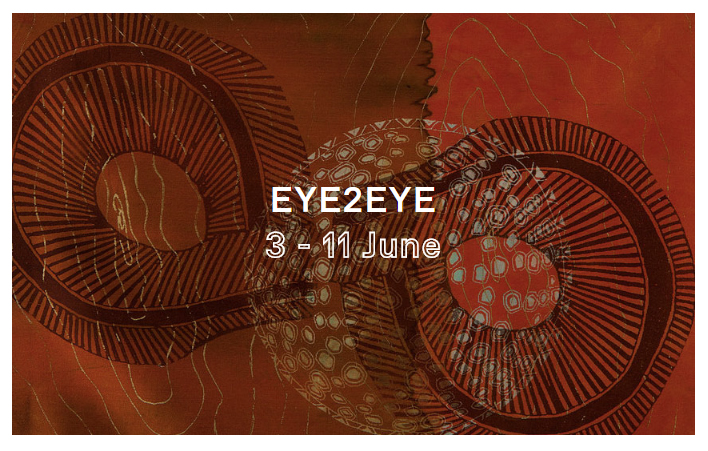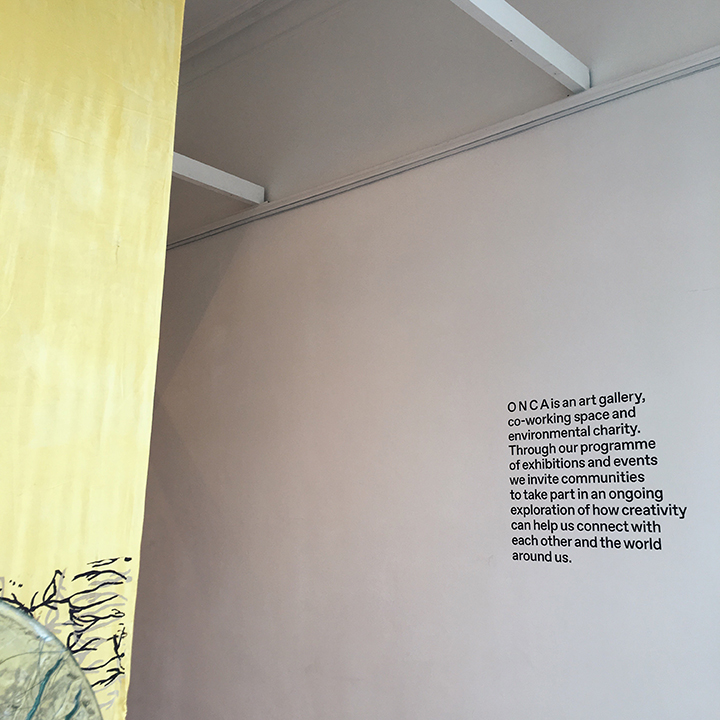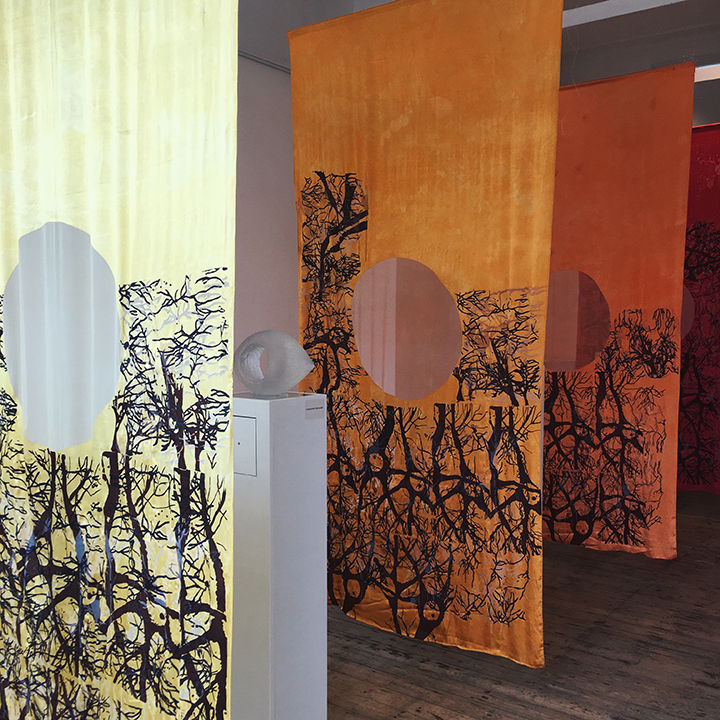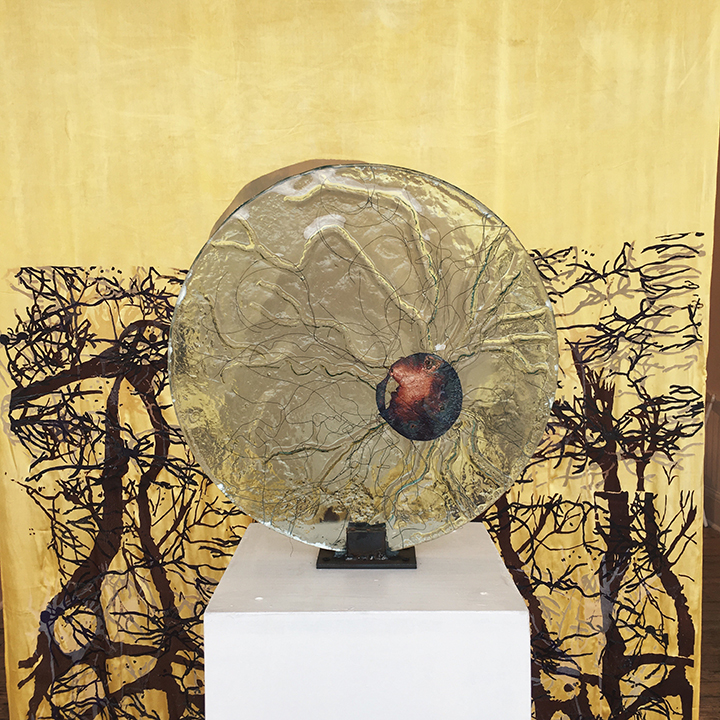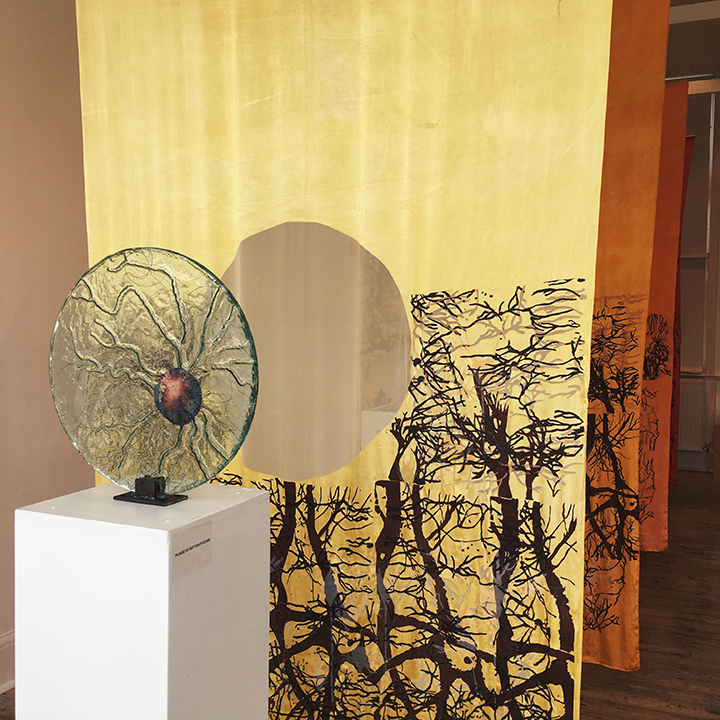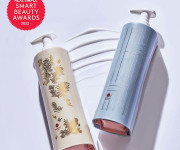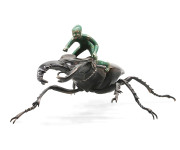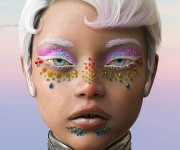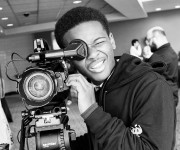Eye2Eye is visual arts project imagined by Omeima Mudawi-Rowlings and Miranda Ellis at ONCA Gallery in Brighton. ONCA has a great reputation for its curating exhibitions, events that ask questions, initiate conversations and tell stories. Awarded an Arts Council England grant, this innovative exhibition is set to explore the complex themes of deafness, deaf and hearing spaces, discrimination and ways of seeing and being.
This project allows both artists to bring their distinctive artistic disciplines and practices into play, exploring new directions for their work through collaboration. Omeima Mudawi-Rowlings is a deaf textile artist of Sudanese and Arab heritage, and Miranda Ellis is a glass artist specializing in sculptural pieces. Both of their works are united by the eye as a central theme, but the concepts and ideas explored in this exhibition are many and layered. “Simultaneously the eye is a window to the wider world, and to the soul. The eye expresses our joy, our pain and allows us insight into the complexities and experiences of each person”, said artist.
The essential concept of ‘Eye2Eye’ exhibitions is the explorations of the differences of perspective between a hearing and a deaf person. Simultaneously however, this project also aims to include ideas about British, European and Arabic identity, and highlight lived experience of discrimination and difference. Given the contemporary political climate, reflecting on these ideas is perhaps as important as it has ever been.
Metaphoric imagery such as trees, limbs, networks and neurons have been developed as their ideas have progressed. The collaborative focus of the exhibition is the retina that began to represent a window, the pivotal point unique to everyone, where images can be seen and begin to be understood.
Reflecting the layers of the retina itself, Omeima Mudawi-Rowlings’s textile layers are printed with images of sensory neurons, which increase in complexity, depth and size through each layer. The layers of textiles represent the layers of thoughts and experiences that multiply as we build our understanding of the world. In a similar way, the intended use of space between the layers is an exploration of deaf space. This is reflected in the freedom the visitors have to walk around the works, exploring the layers and identities.
It was the main thing for both artists to create a space that is welcoming and easily navigated by the deaf community, and most importantly, that BSL users would be able to identify their deaf experience reflected in the work.
The artists have been experimenting with the textile techniques such as printing, burnout and dyeing as well as fused and cast glass techniques. It was a great opportunity for the artists to explore and combine such unusually different mediums. The glass sculptures, interspersed between textiles layers complete with retinal window, are intended to be viewed from one through to another. Together they are creating a universal eye.

